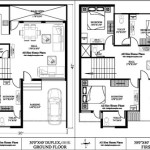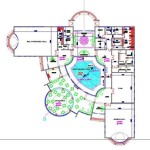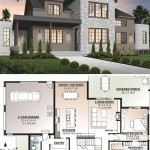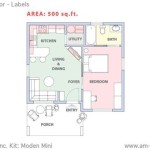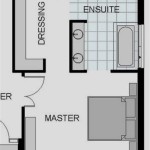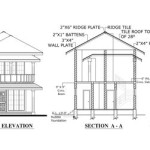House Plan Drafting 101: A Comprehensive Guide
Drafting a house plan is a crucial step in the construction process. It serves as a blueprint for the entire project, guiding contractors and ensuring that the final outcome aligns with your vision. Whether you're a seasoned architect or embarking on your first home-building journey, understanding the basics of house plan drafting can help you create a functional and aesthetically pleasing living space.
1. Understand Your Needs and Preferences:
Before putting pen to paper, take the time to define your requirements and preferences. Consider the number of bedrooms and bathrooms you need, as well as the layout that best suits your lifestyle. Think about features like a spacious kitchen for cooking enthusiasts, a home office for remote work, or a large living area for family gatherings.
2. Choose a Suitable Plot:
The plot of land you select will significantly influence the design of your house. Consider factors like the size, shape, orientation, and any specific challenges or opportunities it presents. Ensure that the plot aligns with local zoning regulations and building codes.
3. Learn the Basics of Architectural Drafting:
Familiarize yourself with the fundamentals of architectural drafting, including symbols, scales, and conventions. You can enroll in online courses or refer to resources like the American Institute of Architects (AIA) for guidance. Additionally, consider using computer-aided design (CAD) software to create digital drawings for precise and efficient results.
4. Create a Preliminary Sketch:
Begin by creating a rough sketch of your house plan. This initial drawing doesn't need to be detailed; its purpose is to capture the overall layout, room placements, and general dimensions. Use graph paper or CAD software to create a proportionate sketch.
5. Develop a Detailed Floor Plan:
Once you have a basic layout, start developing a detailed floor plan. Include dimensions for each room, as well as the location of walls, windows, doors, and staircases. Consider the flow of movement between spaces and ensure that the layout is functional and efficient.
6. Add Elevations and Sections:
Elevations and sections are essential for visualizing the three-dimensional aspects of your house. Elevations show the exterior appearance from different sides, while sections provide a vertical slice through the house, revealing the interiors. These drawings help convey the overall design concept and ensure that the house blends harmoniously with its surroundings.
7. Include Electrical and Plumbing Plans:
In addition to the structural and architectural components, you'll need to create electrical and plumbing plans. These plans specify the location of outlets, switches, light fixtures, plumbing fixtures, and drainage systems. Proper planning ensures that these essential services are integrated seamlessly into your house design.
8. Consult with Experts:
Depending on the complexity of your project, you may want to consult with experts like architects, engineers, and interior designers. Their expertise can help you optimize the design, ensure structural integrity, and create a home that meets your unique needs and aspirations.
9. Review and Revise:
Throughout the drafting process, periodically review your plans and make necessary revisions. Seek feedback from professionals, family members, or friends to ensure that your design aligns with practical considerations, personal preferences, and the overall vision for your dream home.
10. Finalize and Submit:
Once you're satisfied with the final design, finalize the plans and submit them for review and approval by the local building authorities. Ensure that all necessary permits and licenses are obtained before commencing construction.
By following these steps and adhering to proper drafting standards, you can create a comprehensive house plan that not only meets your requirements but also lays the foundation for a beautiful and functional living space.

Lesson Drawings House Plan Drafting Courses

Architectural Graphics 101 Number 1 Life Of An Architect

Architectural Graphics 101 Number 1 Life Of An Architect

Architectural Graphics 101 Wall Types Life Of An Architect

Architectural Graphics 101 Number 1 Life Of An Architect

Construction Blueprints 101 What You Need To Know Letsbuild
How To Completely Draw A House Plan In Both An Architectural And Structural Way For Cad Technicians Quora

House Plan Drawings Microdra Design Solutions

Architectural Graphics 101

Floor Plan Draw Visualize In 3d Estimate Cedreo


